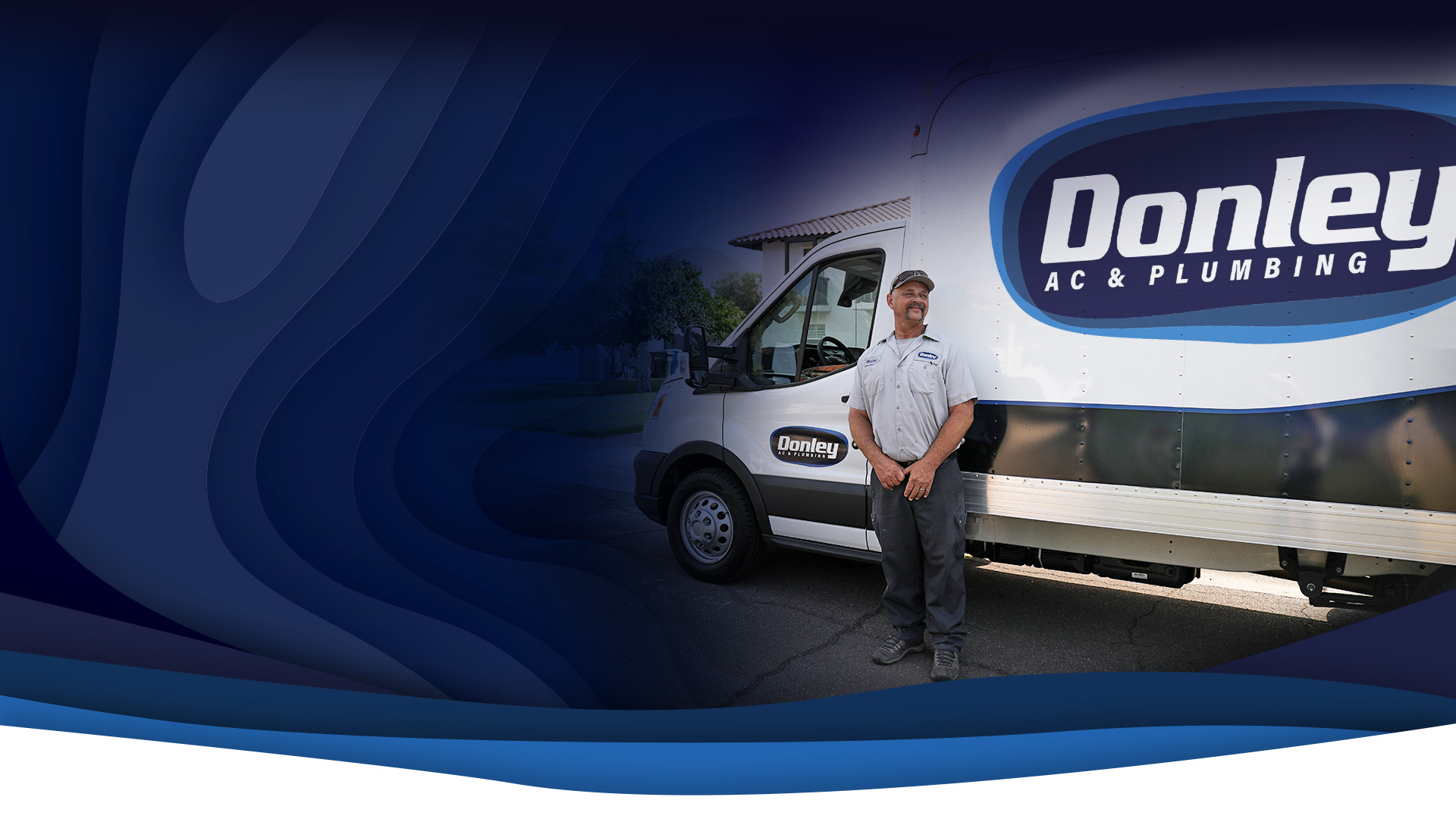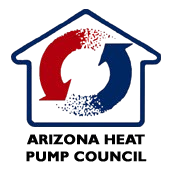
Phoenix HVAC & Plumbing Company
We Provide Heating, Cooling & Plumbing Solutions in Scottsdale, Mesa, and SUrrounding Areas
Since 1976, Donley A/C and Plumbing has provided homeowners and businesses throughout the Phoenix area with dependable HVAC and plumbing services. As a family-run company, we focus on honest pricing, clear communication, and quality workmanship. Whether you need a new AC system, heating repair, plumbing solutions, or routine maintenance, our licensed team is available to help seven days a week.
Reach out to us today at (602) 698-8912 or through our online form and get a free estimate. Se habla español!



How Can We Help You?

Comprehensive HVAC & Plumbing Services for Homes & Businesses
AC & Heating Services in Phoenix, AZ
Phoenix summers bring intense heat, while winter nights can still get chilly. A dependable HVAC system helps keep your home comfortable year-round. Donley A/C and Plumbing provides AC and heating services to help homeowners stay cool in the summer and warm when temperatures drop.
Our cooling & heating services include:
- AC installation & replacement. If your air conditioner struggles to keep up with the Phoenix heat, upgrading to a newer, energy-efficient system can improve cooling performance. We install high-quality AC units designed to handle Arizona’s climate.
- AC repair & tune-ups. From weak airflow to unexpected breakdowns, AC issues can happen at the worst times. Our team diagnoses problems like refrigerant leaks, frozen coils, and electrical malfunctions to get your system running again. Routine maintenance helps extend the life of your unit and improve efficiency.
- Heating system repairs & maintenance. While Phoenix winters are mild, a working heater is still important for cooler nights. We service furnaces, heat pumps, and ductless systems, keeping them running smoothly when you need them.
- Energy-efficient upgrades. Older HVAC systems often use more energy than necessary, leading to higher utility bills. We offer high-efficiency heating and cooling options that provide reliable comfort while helping to reduce energy costs.
We proudly serve Phoenix, AZ, and the surrounding communities, ensuring reliable home comfort no matter where you are. Contact us today to see if we’re in your neighborhood!


Comfort You Can Count On. Service You'll Want to Share.
We Do It Right, Guaranteed.
-
 “What can I say to convey the great service I received. Quick, efficient, and personable. Have had no problems since it was installed.”- Mel P.
“What can I say to convey the great service I received. Quick, efficient, and personable. Have had no problems since it was installed.”- Mel P. -
 “Jose was very professional and friendly. He discussed what he would do, and when the job was done, he went over his findings and asked if there was anything else he could do for us.”- Kevin P.
“Jose was very professional and friendly. He discussed what he would do, and when the job was done, he went over his findings and asked if there was anything else he could do for us.”- Kevin P. -
 “- Misty M.
“- Misty M.They come out promptly and fix the problem. They do not overcharge extremely fair with their prices. I have had one unit replaced and no issues since 2022 and I’m going to have a second unit replaced.
” -
 “I have been with Donley for over 25 years. They offer professional services from the office staff to the technicians. Their prices are more than fair. They are trustworthy and honest. Wonderful people to work with.”- Sharon F.
“I have been with Donley for over 25 years. They offer professional services from the office staff to the technicians. Their prices are more than fair. They are trustworthy and honest. Wonderful people to work with.”- Sharon F. -
 “If you are looking for someone who does high-quality work at very reasonable price Donnelly, AC and plumbing is the way to go! Jose Felix did a kick ass job. He checked everything and fixed it as he went that that he found.”- Glenn G.
“If you are looking for someone who does high-quality work at very reasonable price Donnelly, AC and plumbing is the way to go! Jose Felix did a kick ass job. He checked everything and fixed it as he went that that he found.”- Glenn G. -
 “The technician who responded to my inquiry, Sean, was extremely personable and professional. He was timely in his arrival and honest. He explained all the work that needed to be done.”- Arthur G.
“The technician who responded to my inquiry, Sean, was extremely personable and professional. He was timely in his arrival and honest. He explained all the work that needed to be done.”- Arthur G. -
 “Air conditioner installation went very well, guys were pleasant. Got the job done efficiently even on an extremely hot day. Very pleased with Donley. They do what they say and deliver a good product. We are happy that our home is finally cool.”- Kathy S.
“Air conditioner installation went very well, guys were pleasant. Got the job done efficiently even on an extremely hot day. Very pleased with Donley. They do what they say and deliver a good product. We are happy that our home is finally cool.”- Kathy S. -
 “Seth was very clear in explaining how he would fix our outdoor faucets, the reverse osmosis system and the cost to do so! Seth was on time and completed the work quickly and efficiently!”- Pat E.
“Seth was very clear in explaining how he would fix our outdoor faucets, the reverse osmosis system and the cost to do so! Seth was on time and completed the work quickly and efficiently!”- Pat E. -
 “We’ve used Donley Services for 7 years and found them to be responsive, thorough, and never pushy about buying unneeded products or services. It’s hard to find reliable service techs. Look no further.”- Peter T.
“We’ve used Donley Services for 7 years and found them to be responsive, thorough, and never pushy about buying unneeded products or services. It’s hard to find reliable service techs. Look no further.”- Peter T. -
 “Isidro was fantastic. Evaluated the problem, gave an estimate and the job was completely in a timely manner. He was very polite and verified which type of valve we wanted before installation. We will call Donley for any future services needed.”- Margie S.
“Isidro was fantastic. Evaluated the problem, gave an estimate and the job was completely in a timely manner. He was very polite and verified which type of valve we wanted before installation. We will call Donley for any future services needed.”- Margie S. -
 “I can't say enough about the amazing professionalism and help that I received when my AC unit needed to be replaced. Everyone was kind and took the time to answer many questions. They were honest, punctual, and knowledgeable.”- Linda W.
“I can't say enough about the amazing professionalism and help that I received when my AC unit needed to be replaced. Everyone was kind and took the time to answer many questions. They were honest, punctual, and knowledgeable.”- Linda W. -
 “Arrived on time, called ahead, explained possible costs up front, and then fixed the issue quickly. Great service and knowledgeable technician. Friendly and respectful.”- Jodi R.
“Arrived on time, called ahead, explained possible costs up front, and then fixed the issue quickly. Great service and knowledgeable technician. Friendly and respectful.”- Jodi R.

The Donley Difference
-
Effective & Informative CommunicationWe keep you informed every step of the way with clear, honest, and straightforward communication.
-
49+ Years Industry ExperienceSince 1976, we have provided the valley with responsive, dependable, and caring service.
-
Customer-Focused ServiceWe treat your home like it’s our own.
-
Expert TeamSkilled professionals trained to handle any HVAC or plumbing issue.
-
We Do It Right, GuaranteedOur work isn’t done until you’re completely happy.
-
Honest PricingNo surprises, no hidden fees—just honest work at a fair price.

Why Choose Donley A/C and Plumbing?
Finding a reliable HVAC and plumbing company in Phoenix can be challenging, but Donley A/C and Plumbing has been a trusted name in the Valley for decades.
Here’s what makes us different:
- Service 7 days a week. Heating, cooling, and plumbing problems don’t always happen at convenient times. That is why we are available every day of the week, offering flexible scheduling and same-day service options to help when you need it most.
- Honest pricing. Transparency matters. Customers appreciate knowing what to expect before work begins with no hidden fees, no last-minute surprises, just straightforward pricing.
- Financing options available. Upgrading your HVAC or plumbing system is an investment. We offer financing solutions to help make projects more manageable.
- Effective & informative communication. From the first phone call to job completion, we take the time to explain the process, answer questions, and provide updates so you always feel informed about your service.
- Licensed and insured company. You can have peace of mind knowing your home or business is well cared for.
- Se habla español. Our Spanish-speaking team is ready to assist, making it easier for all customers to get the service they need.
- 4.9 google rating. Homeowners and businesses across Phoenix, Scottsdale, Mesa, Glendale, Chandler, and Gilbert have trusted Donley A/C and Plumbing, and our high customer ratings reflect the quality of service we deliver.
With 49 service trucks on the road and a skilled team ready to assist, Donley A/C and Plumbing is your trusted partner for home comfort. Whether you need an urgent repair or considering an upgrade, we’re here to help.














